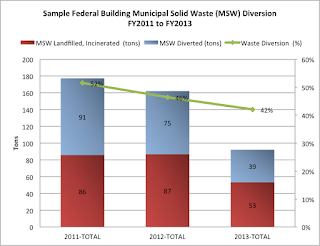SOLID WASTE ANALYSIS DESIGN AND PLANNING
The second step in waste characterization is analysis design and planning.
1. TYPE OF SAMPLING
A sample is a subset of a population that represents the results of whole population. It is necessary to take the sample of waste because it is no possible to analyze the whole population.
Stratified random samples must be used as much as possible. Relevant sources of waste must be sampled from any selected strata. For Example waste bins are able to be sampled from selected strata.
2. NUMBER AND TYPE OF STRATA
The number and kind of strata to be used depends on many factors: waste management information, sufficient resources, need of municipality and availability of sufficient waste planning data.
Maximum five strata could be used. Above than 5 strata's could lead to requiring more sampling from waste to achieve accuracy in results. More sampling would be time requiring so it is preferred to take 5 strata's not more than this.
It is more helpful to make a stratification matrix at initial planning stage that provides the necessary data and information for stratification.
3. LEVEL OF SAMPLING
At three levels sampling could be done:
- Inside household or business e.g. from the internal waste bins
- Outside household or business e.g. from the external waste bins used for kerbside collection
- A refuse collection vehicle
It is recommended to use external waste bins outside households and business.
Criteria for Level of Sampling
- Sample level must fulfill the statistical requirement.
- Sample leveling should not compromise the manual sorting procedures
- Allow correlation and evaluation of household level stratification criteria
4. TYPE OF SAMPLING UNIT
There are 3 main sampling units
- waste bin with volume of 240 liters
- specific waste of household or commercial waste with 100 kg weight
- specific number of persons generating that waste e.g. 30 persons
It is recommended to use volume of waste bin but it is noted that it does not mean the volume of waste within the bin.
5. CALCULATION OF NUMBER OF SAMPLING UNITS AND SAMPLE SIZE
Total number of sampling unit depends on:
- Variation of waste
- Accuracy of results
If the variation coefficient of waste is unknown than for different type of waste following sample size must be used
- household waste 45 meter cube
- mixed household/commercial waste 80 meter cube
- commercial waste 100 meter cube
6. DURATION OF WASTE COLLECTION CAMPAIGN
Municipal waste collection should be done on weekly or daily basis.
It is recommended that waste sampling must cover a week waste e.g. sampling from Monday to Friday covers a full collection cycle and variation due to non collecting waste at weekends .



Comments
Post a Comment